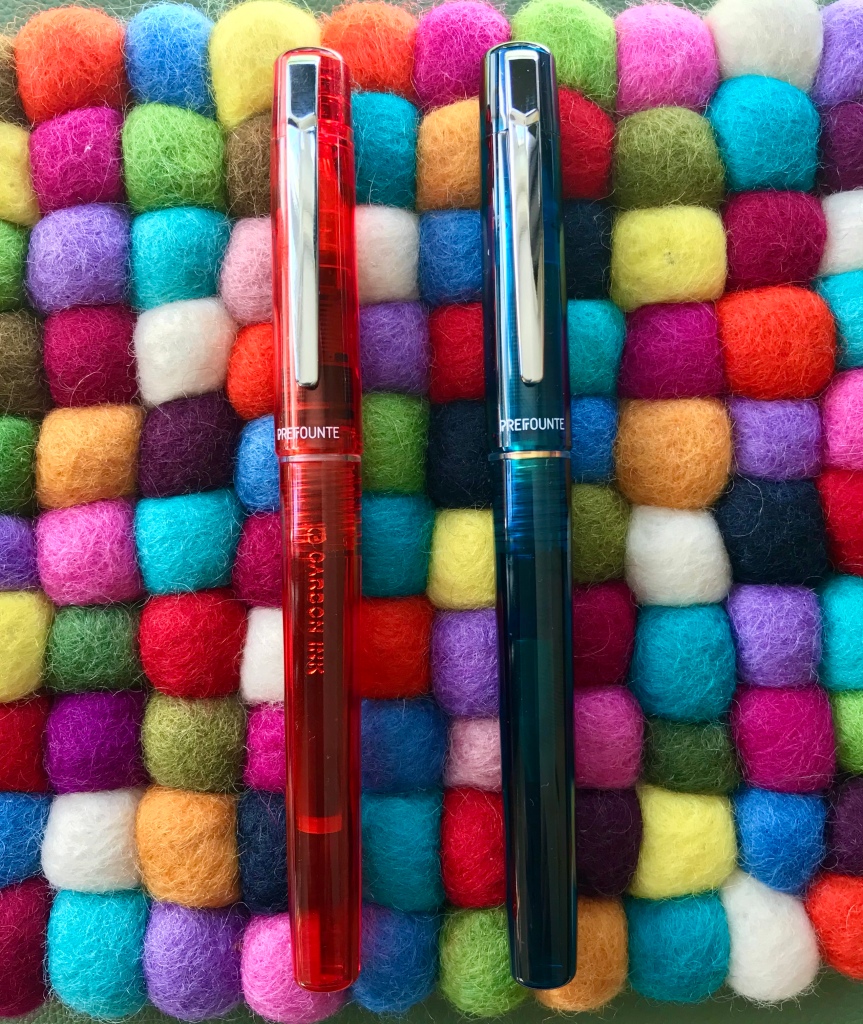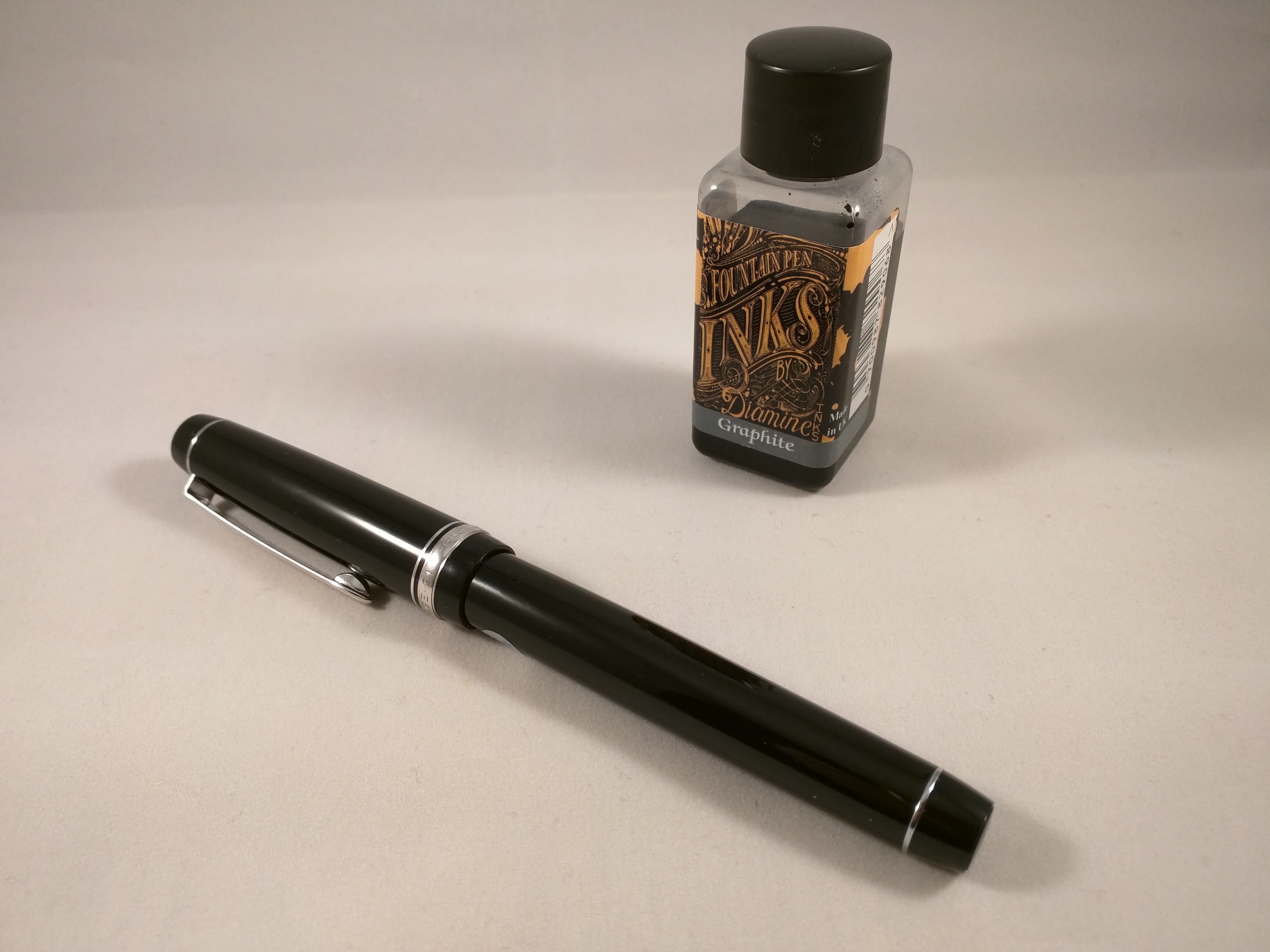It might seem a bit off to be writing a round up of 2020 when I haven’t posted very much on my blog. Lack of output doesn’t equate to lack of acquisition, and 2020 has proved to be a year of surprisingly large investment in pens and stationery.
Covid and me
It’s hard to write a round-up of the year just gone without mentioning the C-word. For whatever may have seemed like hardship, I was in fact extremely fortunate as neither I, nor any of my immediate family contracted Covid. Having a partner who works in a hospital meant it was never far away and the challenges faced by healthcare workers all over the world were very real to us, but what went on in hospital stayed there.
My work was minimally affected and I was able to carry on working from home. Like many people I very quickly discovered how to use Zoom and other platforms. Where things got interesting was in trying to balance working with looking after young kids. We’re still talking to one another 😁, but it was tough going at times.
Although it’s easy to form the impression that the various lockdowns and restrictions gave people loads of time to find creative outlets, what I mostly got was tiredness and not much time or inclination for doing a great deal. About the only thing that kept me sane was getting out of the house for some exercise.
Having some time to draw breath over Christmas has at least given me a chance to sit down and write something, even if it reads like a list of who I threw money at over the last 12 months!
Here’s hoping that 2021 brings some new creative opportunities and the time to do something about them!
And now the fun part…
After all that, it’s time I got on with what went on in my little world of stationery.
Plus ca change
Despite being confined to barracks (in work terms) for the foreseeable future, I’ve stuck with tradition and will be using the Hobonichi Techo as a paper diary again in 2021. I seem to flip-flop between buying direct from Japan and more locally from UK distributors. This year, despite the razzamatazz of the launch in Japan, I took the UK route and purchased from The Journal Shop, along with some A5 Tomoe River notebooks that I’m looking forward to trying.

Learning the art of patience
One of the casualties of the pandemic was international shipping. Having read horror stories of the convoluted routes that some peoples’ purchases took, I’ve been relatively lucky. That said, I had to wait 4 months for one of my Sailors between pre-order and delivery. At least the pen made it safely and (so far) nothing has gone astray.
Jumping in with both feet
I’ve been an admirer of the Sailor Pro Gear for quite some time. In particular, I like the look of the various special editions that seem to surface with ever-increasing frequency. Missing out on one such edition (Bungubox’s Fujiyama Blue) sparked a reactionary splurge that saw me buy the next two Bungubox editions, along with three pens from the Cocktail series.


On top of the 2020 edition (Kure Azur), Sailor re-released the previous 9 cocktail pens as part of a 10-part set. This retailed with an eye-watering price tag, but despite this I did consider this option. Luckily plenty of retailers seem to have been able to offer individual pens, and so I was able to secure the Blue Lagoon and Apres Ski, along with the Kure Azur to join my Tequila Sunrise and Angel’s Delight.



Stilos with style
2020 saw me look more closely at Italian pens. In Spring, I bought my first Leonardo (a Momento Zero) and was an early adopter of the Maiora Impronte. The Leonardo has become a firm favourite. Despite its beautiful resin exterior, the Maiora has proved a far less engaging pen. It’s not a bad pen, but it’s not really for me.

As the end of 2020 approached, the second batch of a collaboration between Leonardo and Jonathan Brooks / Carolina Pen Company was announced. (I missed the first one – are you detecting a common theme here?). Aside from the Leonardo element, I figured this was going to be my best chance to own a pen in the legendary Primary Manipulation acrylic so I jumped at the chance when it came up. I’m happy to say that the result was worth it.

Other pens of note
I eventually took the plunge and bought a Platinum Curidas. I’d been put off buying a Pilot Vanishing Point due to concerns about the position of the clip. Taking advantage of a discount from Cult Pens, I managed to bag the Curidas for a good price. To my surprise (and delight) the various protrusions didn’t interfere with my grip and the Curidas is now a regular in my rotation.

Late to the party (again), I finally bought a Diplomat Aero. I had assumed that I would end up buying the orange version of this pen, but when the ‘factory’ finish appeared, I was tempted enough to buy it. I don’t own many metal pens, but the Aero is comfortable to hold and the nib is a joy to write with . Coupled with the ‘raw’ aluminium finish, this is one of those pens that I just want to write with.
Getting inked up
I may already own more ink that I could possibly use in my lifetime, but this hasn’t stopped me from buying more. Together with an in-house acrylic pen, I tried some of the new ‘home-made’ inks from the Birmingham Pen Company. I’ve been pleased with the results, aside from a minor gripe that one ink (Pittsburgh Bankers Ice Rink) is now a different shade of blue compared to the original. That’s a shame because I really liked the previous colour, but hats off to a small maker for having the courage to start up making their own inks.

Anderillium Inks from Florida finally hit the UK through Hamilton Pens. I took the plunge and bought a few. They’re ridiculously well lubricated, which makes them hard to use in wet-writing pens, but this property has proved to be salvation for my Nakaya Decapod. This pen has never written how I would like it to, but the Anderillium inks counter the inherent dryness of the nib and made the pen useful to me.

My main ink highlight for 2020 has come in the form of the Ukiyo-e series of inks from Taccia. The inks pay homage to the works of artists like Hokusai and Hiroshige. This is a form of art that I love, so I was always going to be tempted by these inks. Aside from the exquisite packaging, the inks are fantastic to write with. Many are quite subtle and subdued, but a few are more ‘showy’. Of these, Sabimidori is one of my favourites.


[As an aside, if you want inspiration for what can be achieved in a lifetime, check out some of the work that Hokusai produced into his 80s. It is truly exquisite.]
What does 2021 have in store?
One realisation from this year has been the need to be more forward thinking about pen purchases. Rather than careering about, trying to buy every pen that appears in my Instagram feed, I’m going to try to actually having something that resembles a plan and a budget to go with it.
I’d like to investigate the world of small-scale makers a bit more, but finding one with a waiting list that isn’t as long as a geological epoch could be a challenge. It’s hard to imagine that I won’t be tempted by more Sailor Pro Gears. Bungubox now has an internationally-facing website in English which could be very dangerous!
One project I’m thinking of tackling is to expand the range of nib customisations that I own. The UK isn’t overly blessed with nibmeisters, so it probably means relying on FPNibs in Spain, but I’m keen to try a range of grinds and tweaks using the TWSBI Eco as a base. It may be less glamorous than a hatful of new pens, but it could be fun and interesting to see what a PO or WA nib will do to my handwriting.
Although I don’t have any specific plans, it’s hard to imagine that I won’t be buying more ink in 2021. The ‘what’ and ‘where from’ remains to be determined.
The field of notebooks could be interesting. I’m pretty well set on Tomoe River as my preferred platform, with the occasional deviation thrown in. However, I’ve yet to experience the new incarnation of this paper and, from reports elesewhere, it seems like I might have to give serious consideration to alternatives. Luckily, I have a reasonably large large stockpile of notebooks based on the ‘old’ 52gsm paper to work through so I can at least afford to take a more leisurely approach.
In terms of more local ambition, I’d like to get back to producing content for my blog. The major activity that has dominated my working life will come to an end in the spring of 2021. I’m hoping that a bit less pressure will give me a bit more time and headspace to actually turn ideas into content.
Since no plan survives contact with the enemy, it will be interesting to see what actually happens!


















